The ocean depths harbor creatures of startling beauty and unique adaptations. Among these, the Sun Star, a captivating member of the starfish family, stands out. Known for its impressive size, radiating arms, and predatory prowess, this fascinating invertebrate deserves a closer look. This guide delves into the world of the Sun Star, exploring its biology, behavior, habitat, and role in the marine ecosystem.
What is a Sun Star?
Sun Stars, scientifically classified under the genus Solaster, are large, multi‑armed sea stars found in the cooler waters of the North Pacific Ocean. They are voracious predators that shape the intertidal and subtidal communities they inhabit. Unlike many other starfish species that typically have five arms, Sun Stars can have anywhere from seven to over twenty, giving them a distinctive, sun‑like appearance. The number of arms can vary even within a single species.

Physical Characteristics
Sun Stars show considerable size variation, with some individuals reaching diameters of up to one meter. Their coloration ranges from orange and red to purple and brown, often featuring striking patterns. The upper surface is covered in small spines and granules that provide protection and aid in grip. These spines are harmless to humans but deter potential predators. The underside is lined with hundreds of tube feet—tiny suction‑cup structures that enable locomotion, feeding, and respiration.
Habitat and Distribution
Sun Stars are primarily found in the cold, nutrient‑rich waters of the North Pacific, ranging from Alaska to Baja California. They favor rocky intertidal zones and shallow subtidal habitats, where they can find ample prey. Commonly observed on rocky reefs, kelp forests, and gravelly seabeds, these habitats offer shelter and a rich food supply.
Diet and Feeding Behavior
Sun Stars are opportunistic carnivores with a broad diet. They prey on other sea stars, bivalves such as clams and mussels, snails, barnacles, and various other invertebrates. Their unique feeding strategy involves wrapping their arms around a prey item and extruding their stomach onto it, secreting digestive enzymes that break down the tissues before the nutrients are absorbed. This external digestion allows them to consume prey larger than their mouths could otherwise handle.
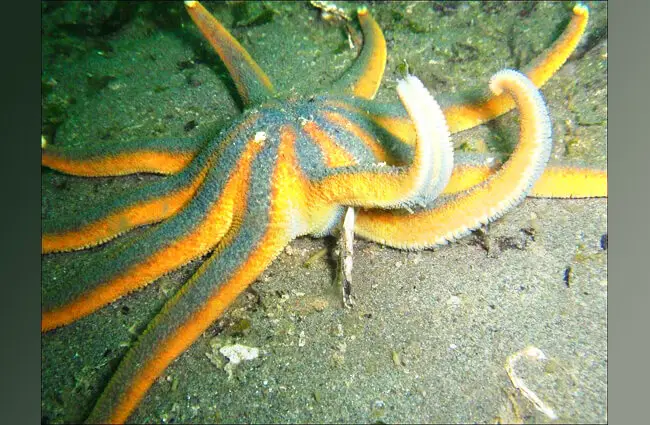
Ecological Role as a Keystone Predator
In many ecosystems, Sun Stars act as keystone predators. By controlling populations of other invertebrates, they help maintain biodiversity and prevent any single species from dominating. Their predation on other sea stars reduces competition, allowing a greater variety of starfish species to coexist.
Reproduction and Life Cycle
Sun Star reproduction is a fascinating process. They typically reproduce sexually, releasing eggs and sperm into the water column for external fertilization. The resulting larvae are planktonic, drifting with currents and undergoing metamorphosis into juvenile sea stars before settling on the seabed. Sun Stars can also reproduce asexually through fragmentation, where a detached arm can regenerate into a complete individual. This ability facilitates rapid colonization and recovery after injury.
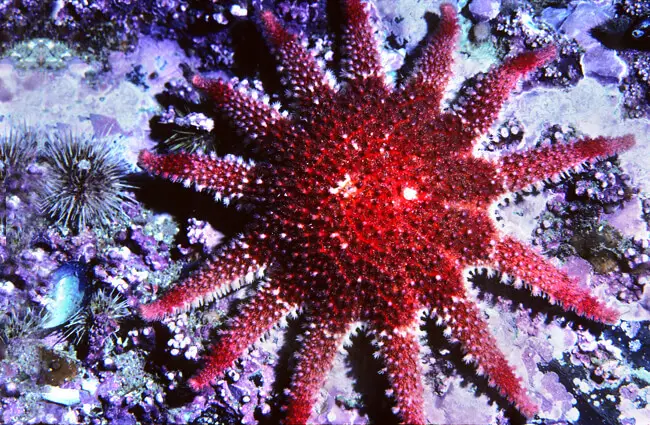
Mating and Spawning
Spawning typically occurs in late spring and early summer. Sun Stars broadcast spawn, releasing their gametes directly into the water. The timing of spawning is often synchronized with lunar cycles and water temperature, ensuring a high concentration of gametes and favorable environmental conditions for fertilization.
Sun Stars and Humans
Sun Stars have limited direct economic impact on humans, but they play an important role in maintaining healthy marine ecosystems that support fisheries and tourism. They are popular subjects for underwater photography and are often observed by divers and snorkelers. In some areas, Sun Stars are collected for the aquarium trade, though this practice is generally discouraged due to sustainability concerns.
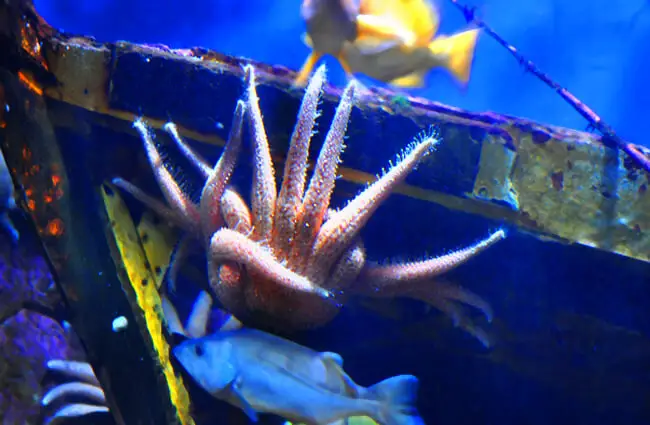
Encounters in the Wild
If you encounter a Sun Star while exploring the intertidal zone, observe it from a distance. Avoid touching or disturbing it, as this can cause stress and damage its delicate tissues. Remember that many marine invertebrates are protected in various regions, and collecting or harming them is often illegal.
Interesting Facts
- Sun Stars can regenerate lost arms, and in some cases an entire individual can regenerate from a single arm.
- They have eyespots at the tips of each arm that detect light and darkness, though they do not form images.
- Sun Stars move relatively slowly, but they can cover considerable distances in search of food.
- They possess a unique water vascular system that powers their tube feet and enables locomotion.
- Different species of Sun Star exhibit varying degrees of arm number and coloration.
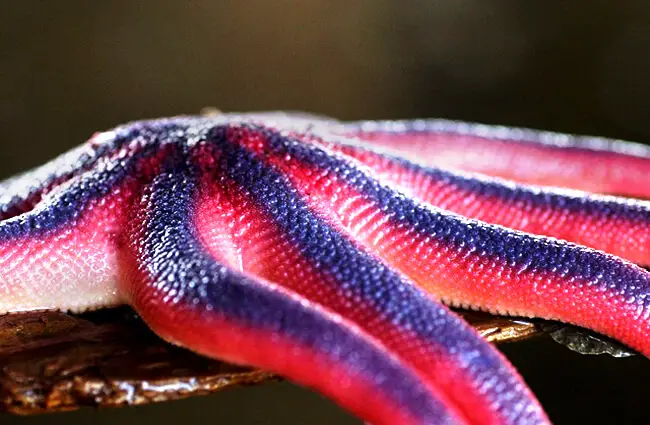
Caring for Sun Stars in Captivity
Keeping Sun Stars in captivity is challenging and requires specialized knowledge and equipment. They need a large tank with ample space to move, a powerful filtration system to maintain water quality, and a constant supply of live or frozen food. It is essential to provide a cold‑water environment with stable parameters, avoid overcrowding, and ensure the tank is free of harmful chemicals. A diverse diet and enrichment activities promote their well‑being.
Evolutionary History
Sun Stars, like all sea stars, belong to the phylum Echinodermata, a group of marine invertebrates with radial symmetry and a distinctive water vascular system. Echinoderms have a long evolutionary history that dates back to the Cambrian period. The evolutionary origins of Sun Stars specifically are still being investigated, but they are believed to have diverged from other starfish lineages millions of years ago.
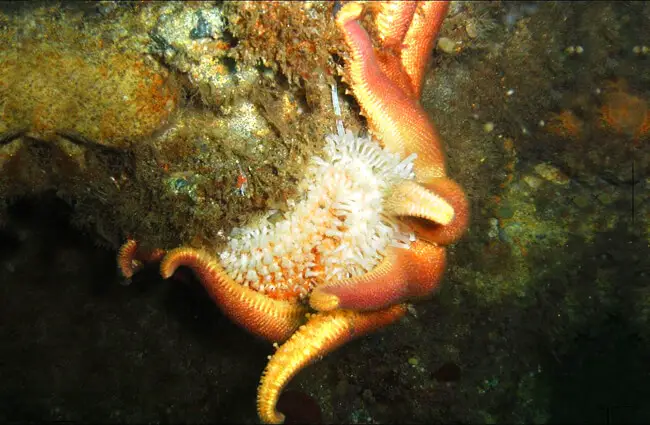
The Sun Star, with its striking appearance and ecological importance, is a remarkable creature deserving of our admiration and protection. By understanding its biology, behavior, and habitat, we can better appreciate its role in the marine ecosystem and contribute to its conservation for future generations.
![This orange Sun Star attacking a Spiny Red Sea Star Photo by: Ed Bowlby, NOAA [Public domain]](https://animals.net/wp-content/uploads/2020/01/Sun-Star-1-650x425.jpg)
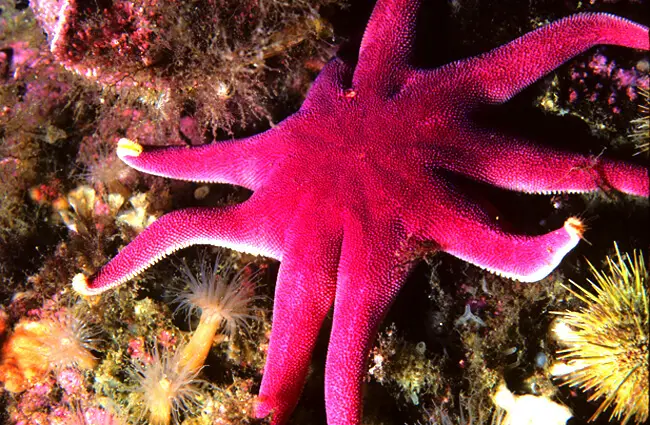

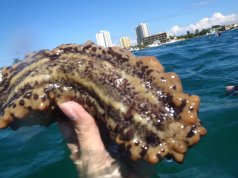

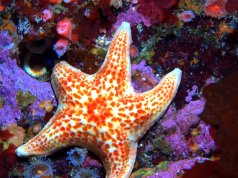

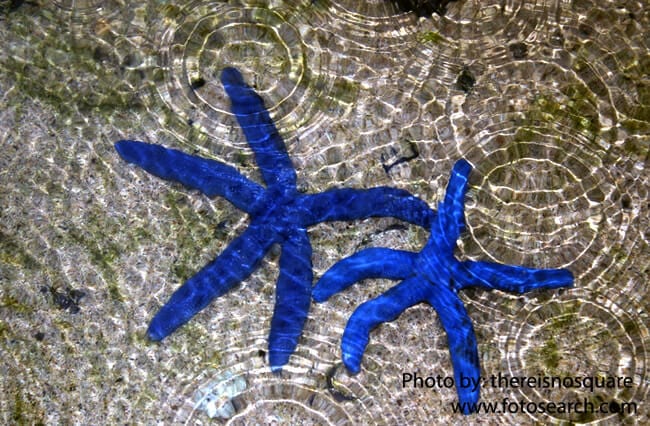
![Red Angus Closeup of a beautiful Red Angus cowPhoto by: U.S. Department of Agriculture [pubic domain]https://creativecommons.org/licenses/by/2.0/](https://animals.net/wp-content/uploads/2020/03/Red-Angus-4-100x75.jpg)

